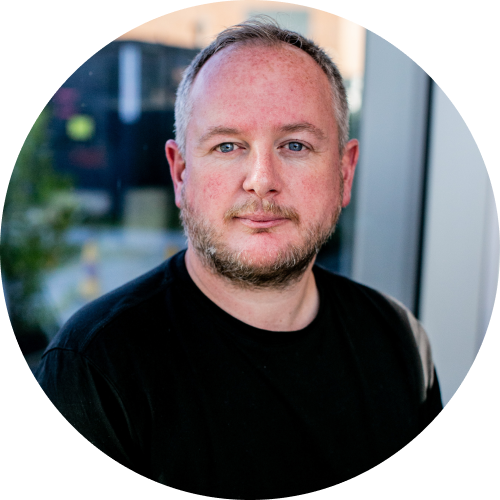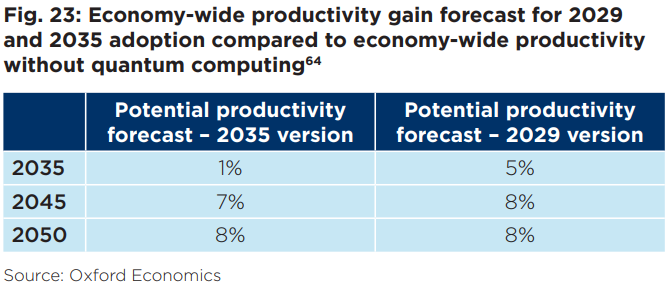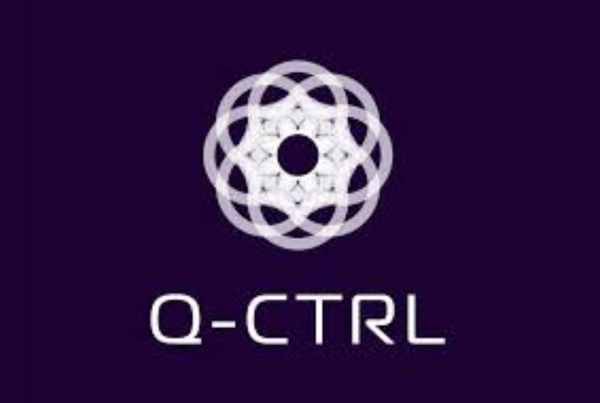
TECHNICAL BLOG
Paving the way for millions of quantum operations

Simon Phillips
CHIEF TECHNOLOGY OFFICER
Simon is an experienced technology executive and seasoned entrepreneur, with experience in setting up and scaling technology businesses. From fundraising, to scaling internationally, Simon has a deep understanding of the fast-paced technology sector and demonstrates critical understanding of the quantum space, OQC’s technical capabilities and roadmap.
If you’ve been following the quantum computing industry in recent years, you may have heard the terms “NISQ” and “Fault-Tolerance”* to describe different regimes of quantum computers — but have you heard of the “MegaQuop”? Reaching the MegaQuop era of quantum computing is a key milestone on the road to useful applications. It is the first stage of increasingly powerful quantum devices, including GigaQuops, TeraQuops and more, which are central to unlocking the social and economic benefits of quantum computing. But what do these quantum eras actually mean; what economic value will they add; and how will we get there?
Let’s break down what a MegaQuop is and its implications for the economic impact of quantum computing, informed by Oxford Economics’ Economic Impact Report, published today. We will also highlight the key elements needed to reach the Megaquop regime, and how we’re accelerating progress towards these goals across our full-stack quantum computers at OQC1.
What is a MegaQuop?
MegaQuop is the regime where quantum processors can execute on the order of a million coherent quantum operations before errors overwhelm computation. It’s a threshold that is essential for unlocking initial real-world applications.
In classical high-performance computing, performance is measured in FLOPS (Floating Point Operations Per Second), while in quantum computing, an analogous metric is Quantum Operations (Quops). MegaQuop, meaning one million coherent quantum operations, is a measure of how long a quantum processor can sustain useful computation before errors dominate1.
For instance, MegaQuop machines could be useful for analysing and exploring certain types of complex physical processes1 (in technical terms, “far-from-equilibrium dynamics”) in shorter timeframes, with higher accuracy levels, and less resources than classical computing will be able to offer. They will also push the development of quantum advantage-level algorithms into the mainstream, as classical counterparts become resource prohibitive.
The real power of quantum computing lies in exponential speedups for specific problems, not just raw operation counts. The building blocks of quantum algorithms are two qubit gates, and today their physical error rates are approximately 4% to 0.2%. To reach MegaQuop, these error rates must drop below 0.1%. To achieve this, we need a combination of:
- improved hardware
- strategies to reduce physical error (known as “error-mitigation”)
- quantum error correction techniques, which will be essential to reduce error rates as we scale up qubit count
We will also need advances across other parts of the quantum computing stack, such as optimizing algorithms to require as few gates as possible and make smart use of the hardware connectivity.
At OQC, we are charting this path with a clear milestone: reaching MegaQuop in 2029. This milestone is a key stepping stone toward the UK Quantum Mission, which envisions quantum computing surpassing classical capabilities across healthcare, finance, transport, defence, energy, and manufacturing by 2035. Insights from Oxford Economics’s Economic impact report show that accelerating quantum adoption to this timeline will have substantial economic benefits.
The report accounted for different scenarios of quantum commercialisation — comparing the impact of a MegaQuop breakthrough by 2029 versus a slower progression by 2035.
Quantum technologies could deliver a major economic boost to the UK as early as 2040, provided processors reach MegaQuop by 2029 instead of 2035. If the technology scales faster, end-user industries like pharmaceuticals, transport, and financial services could see accelerated productivity gains. Notably these quantum computers could enhance high-performance computing workflows, accelerating breakthroughs in areas such as risk assessment2 and AI optimisation. The report highlights that quantum computing is expected to increase productivity across the UK economy by up to 7% by 2045, which could result in a potential additional £212 billion in gross value added.

Our building blocks for MegaQuop
OQC has already made significant strides towards the MegaQuop, setting the stage for the further advances needed. Here are the key technical challenges to overcome, and some of the exciting progress we’re making towards that:
- Reducing physical error rates of qubits below 0.1%. We are working on strategically tuning our qubits to reduce errors, in addition to improving the materials we use for our chips, so qubits stay coherent for longer
- The main source of errors in many quantum architectures, including ours, is when energetic qubit states decay to less energetic ones. With innovative qubit designs, we can engineer our hardware to make these errors detectable, so we can pinpoint where they happened. This crucial location information can significantly reduce error rates, as OQC have recently demonstrated in our work on hardware efficient error-detection
- In the words of Caltech’s John Preskill in a recent talk, “speed matters — the time on the wall clock for executing a logical gate should be as short as possible.” Our modality, superconducting qubits, will allow gates to run quickly on our devices, enabling useful algorithms to run in reasonable timescales. Estimates indicate that fast gates can compress the runtime of promising algorithms from hours to seconds3
- And of course, scaling beyond 1,000 qubits demands scalable architectures and advanced control systems. Our proprietary technology features not only a three dimensional architecture that isolates control wiring from the quantum chip but also a control system that is poised to efficiently manage large qubit arrays
As we move forward, the key to success lies in error correction, hardware advancements, and real-time error decoding. Progress requires continuous collaboration between academia, industry, and government and the adequate funding to support the fast track commercialisation that is required.
The future is quantum, and our journey to MegaQuops is just the beginning.
*Key terms
Noisy, Intermediate-Scale Quantum (NISQ): The term NISQ (Noisy Intermediate-Scale Quantum) describes the current generation of quantum computers, which have enough qubits to perform tasks beyond classical simulation but lack error correction, limiting their useful computational power. Today, NISQ systems have scientific value but lack the applications where they demonstrate quantum advantage over the best classical algorithms. To bridge this gap the industry is looking to transition from NISQ to FTQC computing, where large-scale, error-corrected quantum computers can execute complex algorithms reliably.
Fault-tolerant quantum computing (FTQC): When the industry talks about FTQC what are they explicitly referring to? As with many quantum terms, FTQC has been borrowed from the classical computing concepts of fault tolerance, which refers to a computer’s ability to continue functioning despite errors or failures. The term quickly gained traction and the industry formalised the definition as architectures for scalable, error corrected quantum computers. The era of FTQC will be marked by milestones such as MegaQuop and, further down the line, GigaQuop (billion operations) and TeraQuop (trillion operations).
For more information on NISQ and FTQC please see the seminal paper by Dr. John Preskill “Quantum Computing in the NISQ era and beyond”.
Quantum Economic Impact Report
New data from Oxford Economics states that quantum computing is expected to increase productivity across the UK economy by up to 7% by 2045, which could result in a potential additional £212 billion in gross value added.
Read the full report: https://bit.ly/oxford-economics-uk-quantum-impact-report
Join our newsletter for more articles like this
By clicking ‘sign up’ you’re confirming that you agree with our Terms & Conditions


